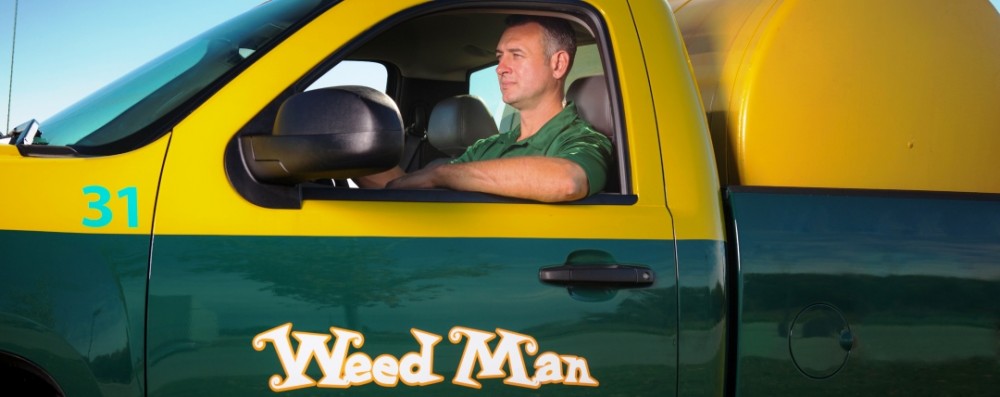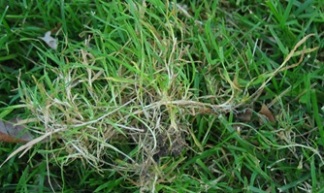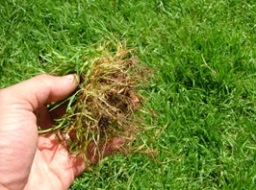During the early summer when the warmer weather hits, we typically see a number of common turfgrass diseases. Here are a few tips on how to spot these troublesome diseases.
In the early part of summer, we typically start to see a noticeable shift in weather patterns. Those cooler spring days start to become consistently warmer – and we start to see warmer nights, too. This major change can trigger several common turfgrass diseases, ultimately leading to an increase in calls to our local offices from customers requesting a visit from one of our turf care experts.
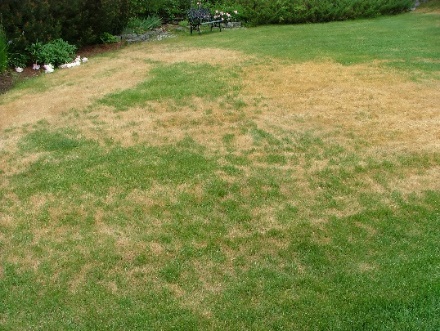
Leaf blight
On northern bluegrass lawns, leaf blight is one of the most difficult early summer diseases to manage, mainly because it can happen so quickly and affect large areas that resemble a chemical burn. Oftentimes leaf blight may impact one person’s lawn and not the lawn right next door, simply because of isolated cultural conditions (e.g. a dull mower blade) which can influence the spread of the disease or the severity of it from one lawn to another.
Leaf blight disease generally enters the grass plants after evening mowing followed by excessive night watering. In heavily infested patches, the fungus damages the lawn in circular patches that often form large bleached areas. Closer inspection of the plant reveals individual leaves dying from the tips down.
Lawns react much like a house plant when they get a leaf disease: the first reaction of the plant is to drop the diseased leaf before the disease can enter the main part of the plant. Turf is similar in that it will shed the infected leaf by thinning the lawn out. When conditions improve, the lawn will regrow the leaf and start to fill back in. Sometimes this can take weeks and other times it can take longer depending on the weather patterns present.
The second disease we usually see at this time of year — although mainly further south where tall fescue and more southern grasses like St. Augustines are grown — is brown patch. The causal agent of brown patch is the fungus Rhizoctonia solani, and symptoms of the disease include patches of dead and dying grass. The turf in these patches often appears “sunken.” The center of diseased patches may appear less affected, and it may show the frog-eye symptoms commonly associated with summer patch. However, look for the characteristic brown-patch leaf spot on individual blades. It will help distinguish brown patch from summer patch. Also, brown-patch-affected turf appears less matted.
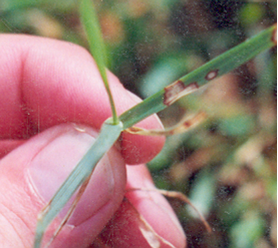
So what is the best treatment available to prevent these two diseases from developing? The most important thing is to ensure you have a sharp mower blade, as this will help the grass heal quickly before the disease has a chance to enter the leaf blade and infect the turfgrass.
The second thing is avoid overwatering the lawn at this time of year. Some customers with irrigation systems will have them on and watering when it isn’t required. Too much water is a major issue that contributes to the formation of these diseases. Remember: water in the morning and avoid evening watering or mowing when the lawn is wet.
Lastly, a healthy, well-maintained lawn is the best defense against harmful disease. It is important to keep the lawn fertilized regularly. Although out of your control, improved weather conditions will also greatly assist in the lawn recovering from leaf disease. Once we get into the real heat of summer, these diseases will disappear on their own…although that just means others more suited for the heat may appear.
If you have any questions about your lawn? Weed Man would be happy to help you. Find your local Weed Man using our locator map HERE.
Keep those lawns healthy,
Chris
